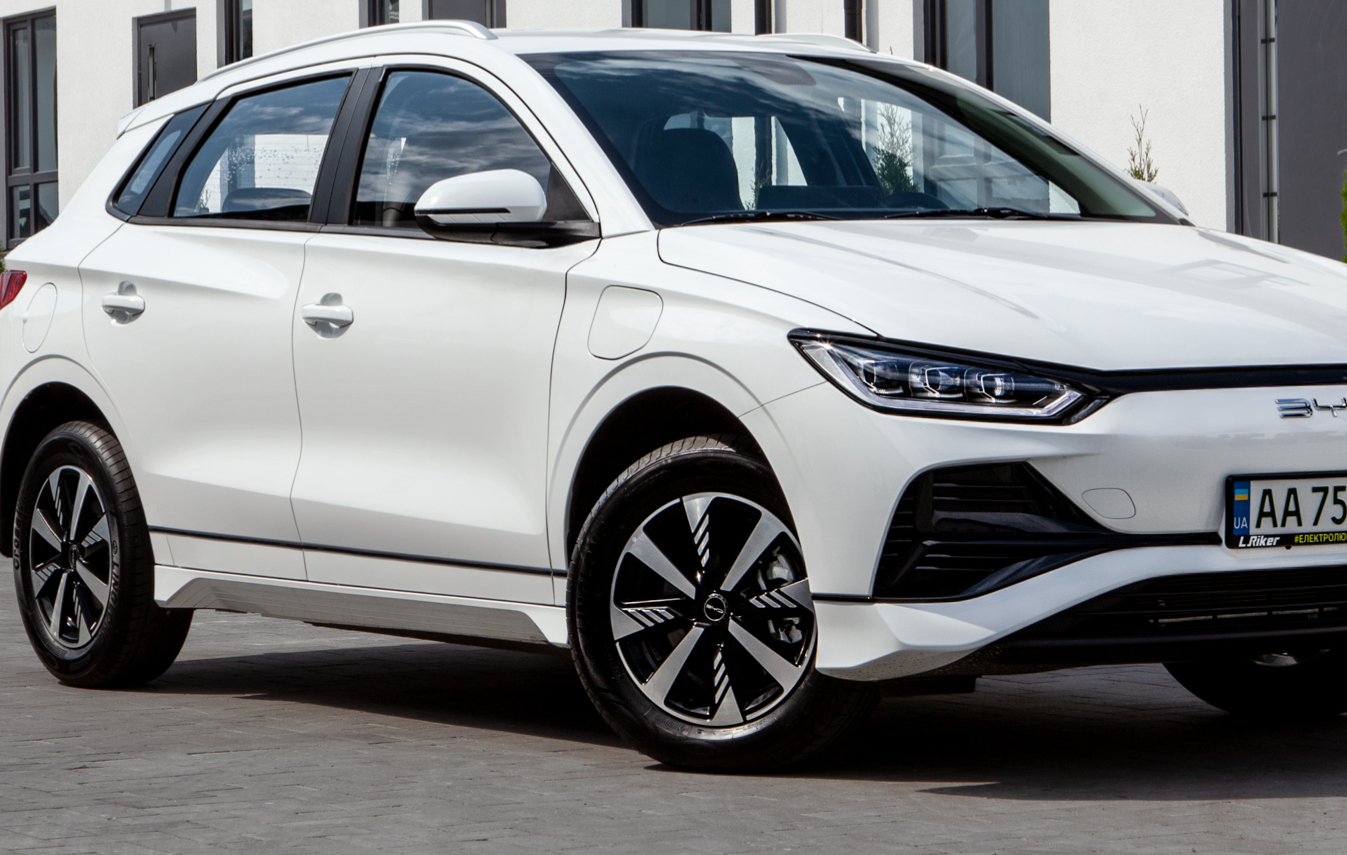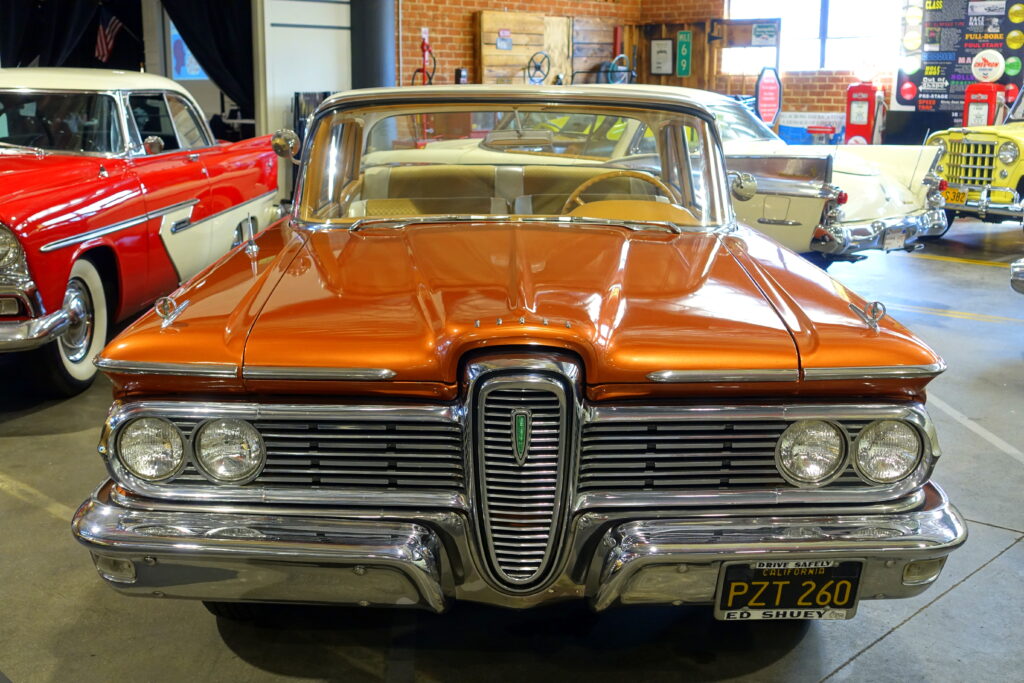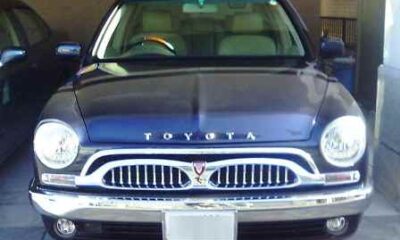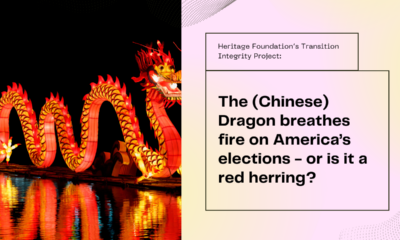Executive
As China Builds Yugos, EVs May Be the New Edsels
China is building compact electric vehicles, while Western automakers make the same mistake Edsel made in 1957.

The year 1957 is memorable for at least two historic launches. The launch by the Soviet Socialist Union of the Sputnik, the world’s first artificial satellite, prompted the U.S. to create the National Aeronautics and Space Administration (NASA) the very next year.
Eleven years later, Neil Armstrong stepped out of Apollo 11 and famously proclaimed, “That’s one small step for man, one giant leap for mankind.”
Barely three years later, Apollo 17 astronaut Eugene Cernan announced the end of the manned space flight experiment: “We shall return, with peace and hope for all mankind.”
Many believe that the Challenger launch failure in 1986, with teacher Christa McAuliffe one of the seven dead, and the disintegration of Space Shuttle Columbia in 2003, in which another seven astronauts died, ended the U.S. dream of manned space flight.
Former NASA Jet Propulsion Laboratory systems engineer Mark Adler spilled the beans in 2015. “The bottom-line answer is that it was … way too expensive. The shuttle never met its promise for low-cost access to space.” [Well, it was a government program!]
Cost-cutting and bureaucratic overkill were behind the Challenger (whose politically correct O-rings failed) and Columbia disasters. As chief NASA historian Bill Barry told Newsweek, “People realized that [Columbia] was a lot more risky than generally thought [mostly] because of [design] compromises … due to cutbacks in the budget [emphasis added].”

The other historic 1957 launch was Ford Motor Company’s much-heralded Edsel. Ten years in the making, at a development cost of $250 million ($2.78 billion in 2024 dollars), Ford dealers saw thousands lining up to buy the new dream car that September, but by yearend monthly sales had fallen by a third.
Two years later, Ford ceased production of the Edsel and revamped its production lines to build compact cars. According to Time reporter Lily Rothman, “As it turned out, the Edsel was a classic case of the wrong car for the wrong market at the wrong time.”
Ford had relied on market research showing that within a decade half of U.S. families could buy then-popular medium-priced vehicles. Further studies led Ford to design “the smart car for the younger executive or professional family on its way up.”
To Ford’s sad surprise, by 1957 the lust for medium-priced cars was usurped by a new boom in the compact field, an area the Edsel research had overlooked completely, said Rothman.
Much as with the space program, the federal government has spent huge sums subsidizing the construction and purchase of electric vehicles, including 18-wheelers, airplanes, and tanks. All of this has been driven, ostensibly, by the perceived threat posed by the plant food carbon dioxide.
Much as with the Edsel, the electric vehicles that European, American, and other Western governments have been subsidizing are “the wrong car for the wrong market at the wrong time.”
Around the planet, individuals, automakers, and even policy advisors are waking up to this gross miscalculation.
Meanwhile, the Chinese, who long ago cornered the market on the primary raw materials and technologies needed for producing EVs in quantity, stand to be the primary sellers of vehicles Western governments have mandated that the hoi polloi purchase.
The largest Chinese automaker, Biyadi (BYD), uses the slogan “Build Your Dream” to lure buyers into even greater reliance on Chinese technology that will erase tens of thousands of American jobs.
BYD sells battery-electric vehicles in China for US$26,000. BYD makes its own batteries, semiconductors, and seal upholstery, and its nearly 30,000 patents owned or filed puts BYD light years ahead of any Western automaker.
The only brakes on China destroying the world auto market are tariffs and other import restrictions – or ending the EV mandates. But the tariffs would likely be passed onto customers, forcing Americans to pay double if Washington forces Chinese EVs down their throats.
And, as noted, without the tariffs, Ford, General Motors, and every other non-Chinese automaker could quickly be forced into bankruptcy. The United Auto Workers know this and hedged their bets for 2024 by throwing money in both directions. Western automakers, joining Toyota, have already pulled back from their EV production commitments.
Ford, which has been losing $60,000 – more than the selling price – on every EV it sells, saw sales of its Lightning F-150 fall 46% in third quarter 2023. Mercedes downsized its EV sales projections by 2030 by 50% and announced it will update its petrol-fueled fleet engines into the next decade. Now Ford has halted all shipments of the Lightning F-150.
Rivian, too, has fallen on hard times, laying off 10% of its workforce, signaling a significant decline in demand. With prices starting at $70,000 for its pickup and $75,000 for its SUV, the sales downturn led to a corporate loss of $1.52 billion in the first quarter of fiscal 2023.
Slackening demand for EVs has even led to entire mines shutting down as the supply of rare-earth minerals now exceeds demand. Albemarle announced it was deferring spending on a planned $1.3 billion plant in North Carolina. The price of lithium has shrunk by 90%, and the price of nickel has been cut in half. As a result, a nickel mine in New Caledonia recently suspended operations.
In the UK, auto dealers are offering discounts of up to 25% on EVs sitting idle on their lots. The Lords Committee says British drivers are “giving the cold shoulder” to the electric transition despite dramatic drops in finance rates for EVs in an effort to boost flagging sales. Non-fleet EV purchases in the UK fell by 25% from the prior year, with yet another reason being much higher auto insurance rates.
The obvious ability of China to dominate the EV market, coupled with increasing public resistance to EV mandates, has put pressure on the European Union and its member states. A year ago, the EU took a baby step backward, agreeing to allow sales and registration of internal combustion engine vehicles after the 2035 deadline if they operate only on carbon-neutral fuels.
In the U.S., President Biden had until very recently doubled down on his EV demands, ignoring the concerns of automakers, auto unions, and the auto buying public. Just a week ago, the EPA indicated it was “considering” delaying EV mandates beyond 2030, an election-year concession that could quickly be reversed.
A 2023 Gallup poll showed that only 16% of Americans with incomes between $50,000 and $100,000 either own or are “seriously” considering purchasing an electric vehicle. The most likely EV buyer is a Democrat who lives in a Pacific Coast state, but only 28% of U.S. Democrats and 25% on the West Coast either own or are “seriously” considering an EV.
As Mark Knopfler’s Romeo said to Juliet, “the timing was all wrong,” perhaps the only real flaw with the current EV mandates is that the supply chain – especially in the West – is just not ready for prime time.
But in another few years, things could change. After all, the privately funded Odysseus Moon lander just became the first new U.S. presence on the lunar surface in 55 years.
On the other hand, unless the West cedes EV manufacturing to China, the EV may soon become so unpopular it will go the way of the Edsel.
This article was originally published by RealClearEnergy and made available via RealClearWire.
Duggan Flanakin is a senior policy analyst at the Committee For A Constructive Tomorrow who writes on a wide variety of public policy issues.
-

 Executive4 days ago
Executive4 days agoSecret Service chief gets no solace
-

 Executive3 days ago
Executive3 days agoWaste of the Day: Louisville Taxpayers Pay Nearly $600,000 For Empty Building’s Maintenance, Security
-

 Guest Columns4 days ago
Guest Columns4 days agoFear Itself: Democrats’ Favorite Strategy Caused Their Current Chaos
-

 Executive3 days ago
Executive3 days agoWhere is Joe Biden – or Jill?
-

 Executive1 day ago
Executive1 day agoWaste of the Day: Throwback Thursday: Cities Used Crime Prevention Funds on Soccer Games, Paper Shredding
-

 Executive2 days ago
Executive2 days agoFacile and politically motivated suggestions
-

 Civilization4 days ago
Civilization4 days agoBuild Iron Dome in the United States To Prepare for Israel’s Worst Day
-

 Executive4 days ago
Executive4 days agoThe Emerging GOP Plan To Beat Kamala Harris














